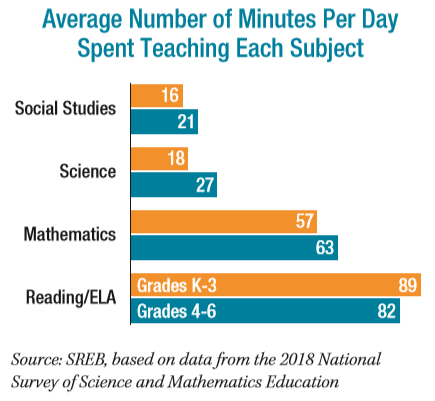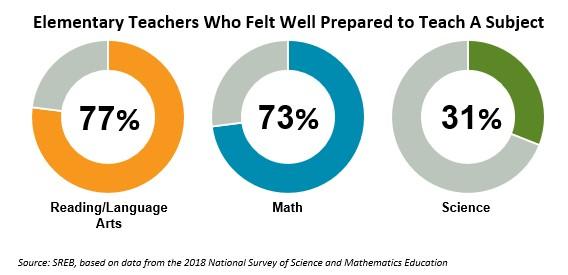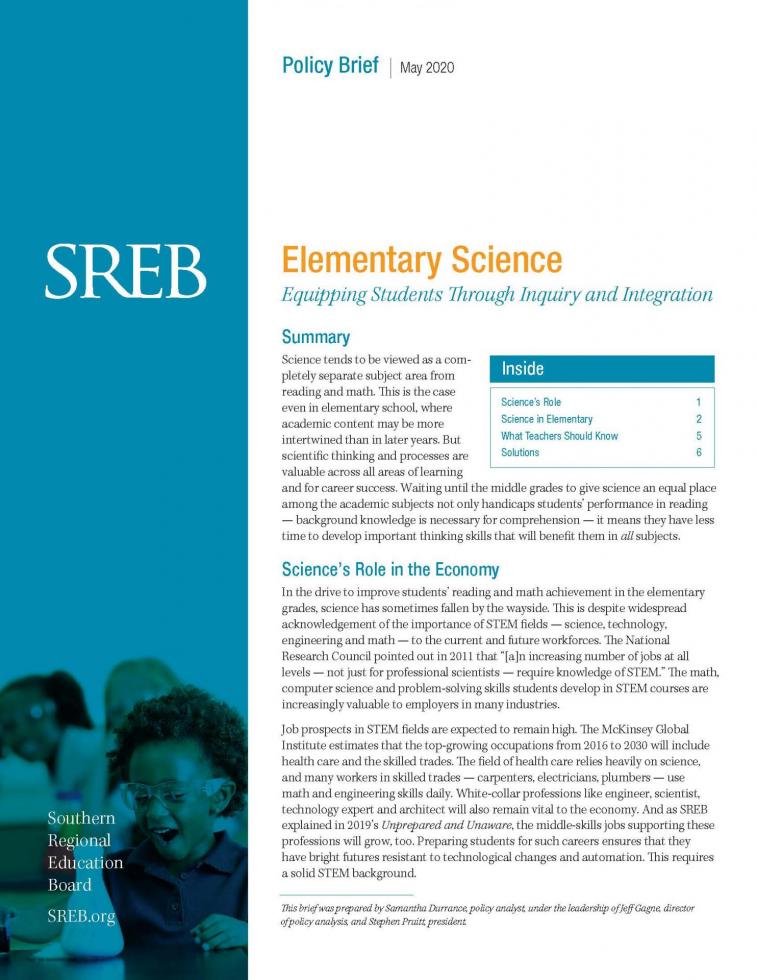Improving Early Science Instruction
Ensuring prepared teachers and engaged students
In the drive to improve students’ reading and math achievement in the elementary grades, science has sometimes fallen by the wayside. This despite widespread acknowledgement of the importance of STEM fields — science, technology, engineering and math — to current and future workforces.
Giving science its proper attention means setting aside time in the school day for science instruction and inquiry. But the 2018 National Survey of Science and Mathematics Education found that, while 99% of K-3 teachers reported teaching math all or most days each week, only 17% said the same of science. And the average amount of time K-3 teachers said they spent teaching science? Just 18 minutes per day, compared with 89 minutes for reading and 57 for math.
The question of what science instruction should entail has received a lot of attention in recent years. In 2012, the National Research Council published A Framework for K-12 Science Education, which noted a number of problems with science education in the United States: it was disorganized and misaligned across grade levels, had a broad but shallow focus, and emphasized discrete facts without providing students enough opportunities to actually experience science.
The framework proposed a reorganization of K-12 science education into a coherent approach with three main dimensions:
- Scientific and engineering practices
- Crosscutting concepts that unify the study of science and engineering
- Core ideas in physical sciences, life sciences, earth and space sciences, and engineering, technology and applications of science
Building scientific literacy through the NRC framework is the core work of all science teachers. Good science teachers create in students “a need to learn” and make thinking visible. They provide opportunities for students to make predictions and explain their reasoning. In these classrooms, students explore scientific phenomena before being formally exposed to the content. This “activity before content” (ABC) approach has students engage in scientific behaviors and thought processes by asking scientific questions, conducting investigations, interpreting data and using evidence to engage in argument.
To facilitate this kind of learning, elementary teachers need content knowledge themselves, as well as knowledge of scientific thinking and processes. Studies show that this is often a problem. While 77% of teachers in the 2018 National Survey of Science and Mathematics Education reported feeling very well prepared to teach reading and 73% percent felt very well prepared to teach math, this dropped to just 31% for science. A combined 27% of teachers surveyed felt they were not adequately prepared or only somewhat prepared to teach science. These rates were just 3% for language arts and 4% for math.
All teachers deserve proper preparation to encourage children’s natural interest in science
Developing this expertise in elementary teachers requires courses designed specifically for these goals, rather than general college-level science courses in topics like chemistry and biology. Science courses also need to ground future teachers in the National Research Council framework’s three dimensions. The NRC felt that more than one science methods course is necessary to develop the knowledge teachers need across all elementary grades.
All teachers deserve proper preparation to encourage children’s natural interest in science. This requires both content knowledge and instruction in science teaching methods, including integrating reading, writing, math and science skills. Teachers need to be equipped to offer both crosscutting concepts and the core ideas of scientific learning. States can examine their standards and requirements for teacher preparation programs to determine whether they adequately address these needs.




